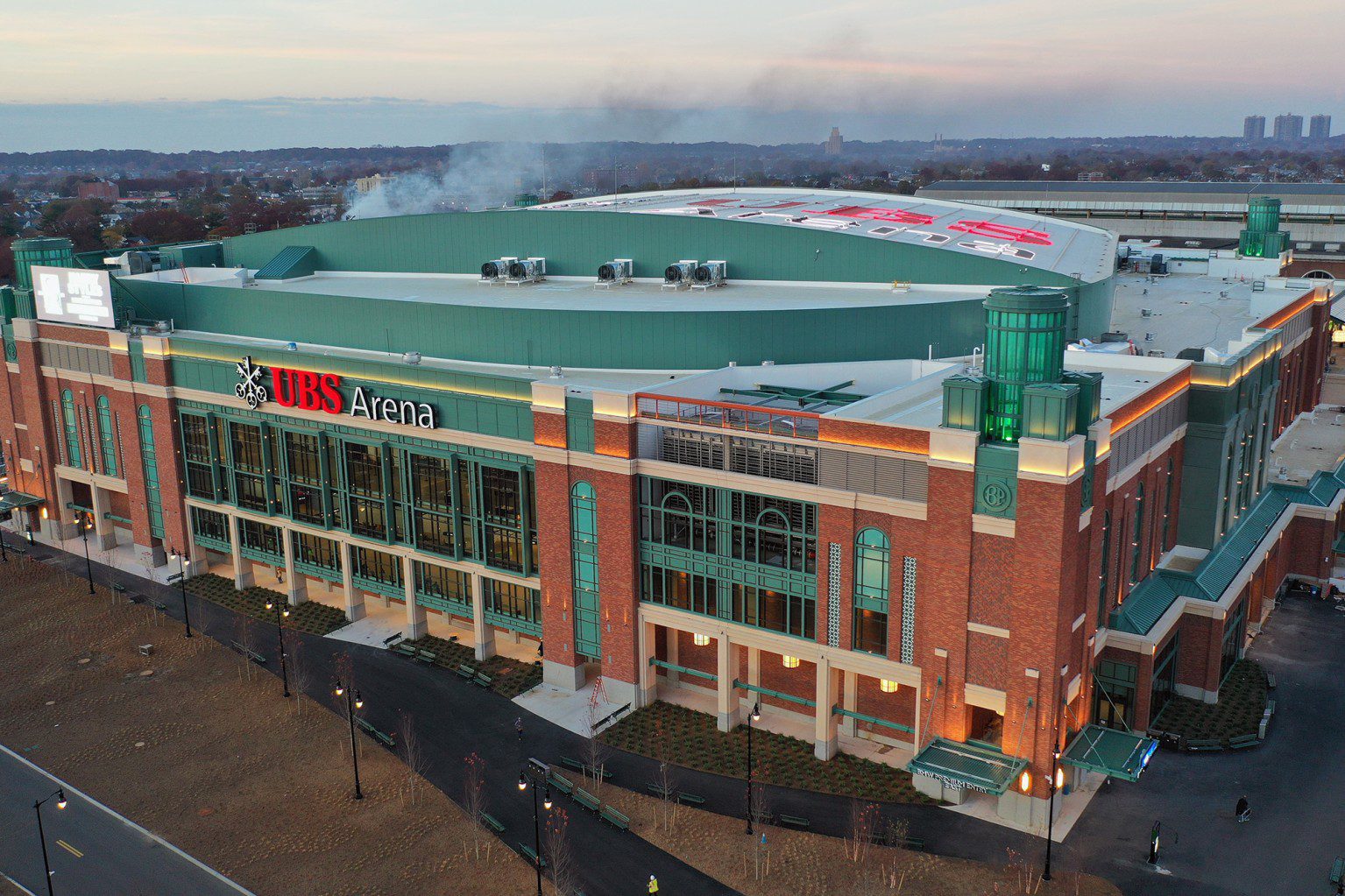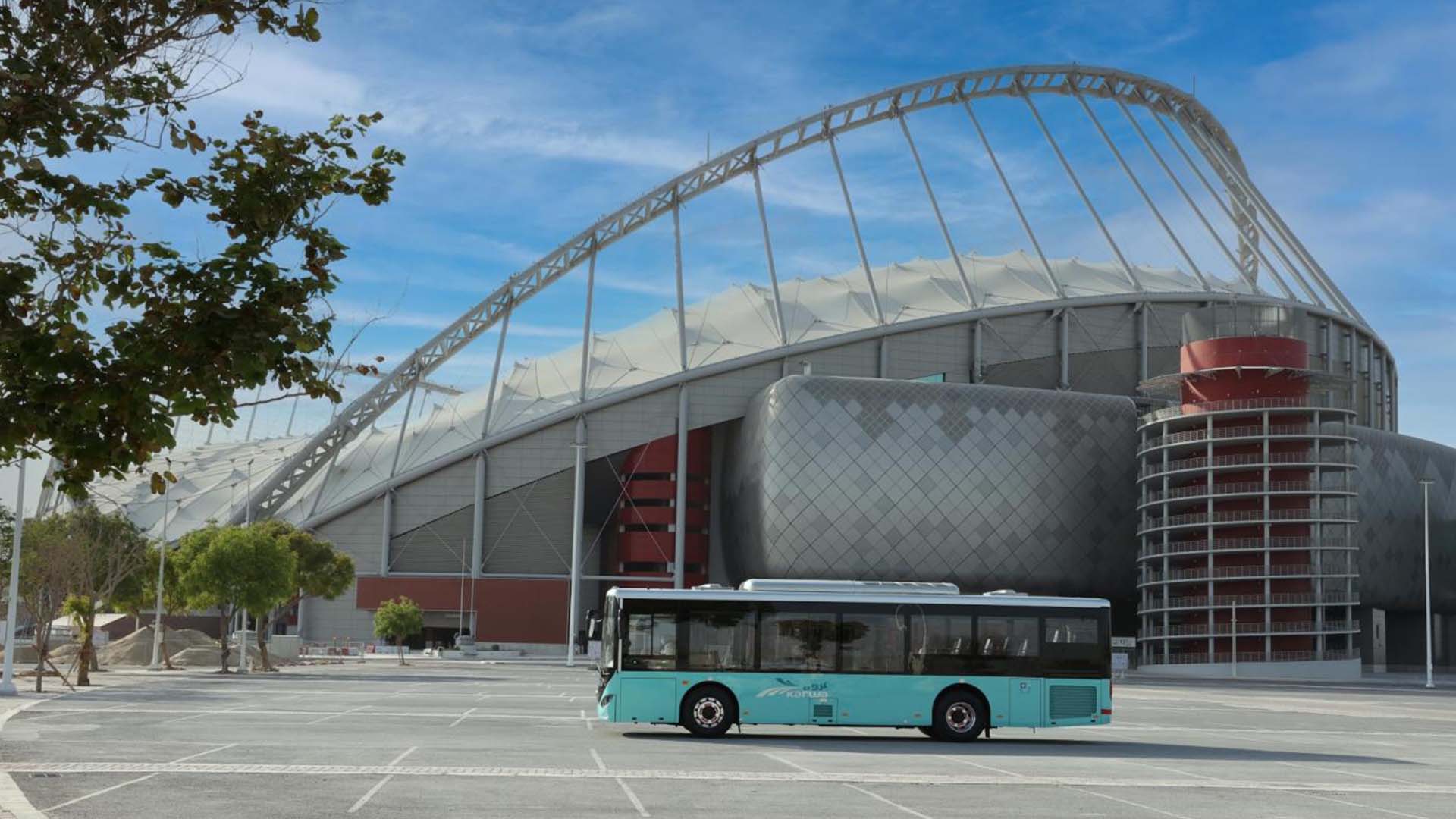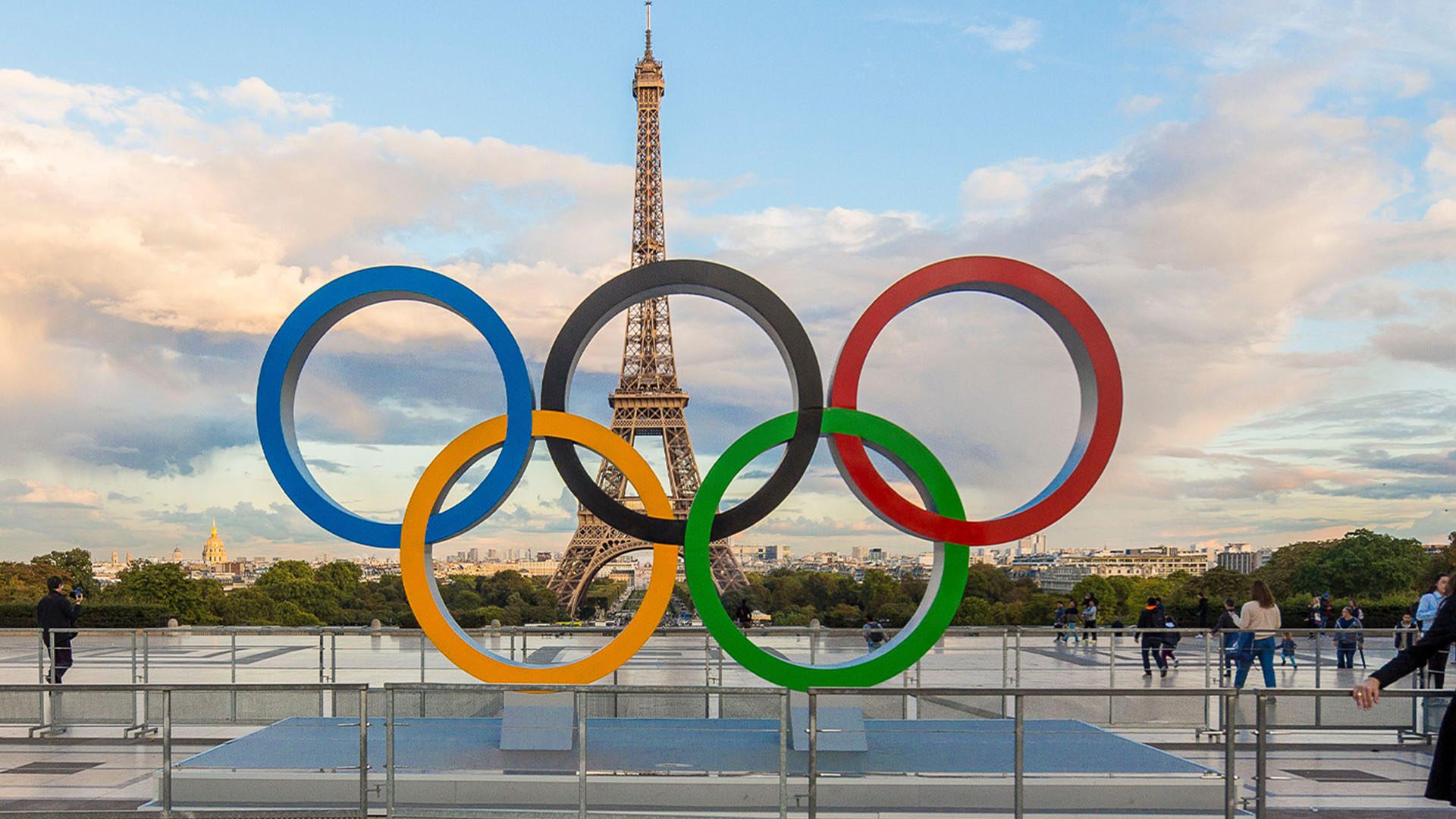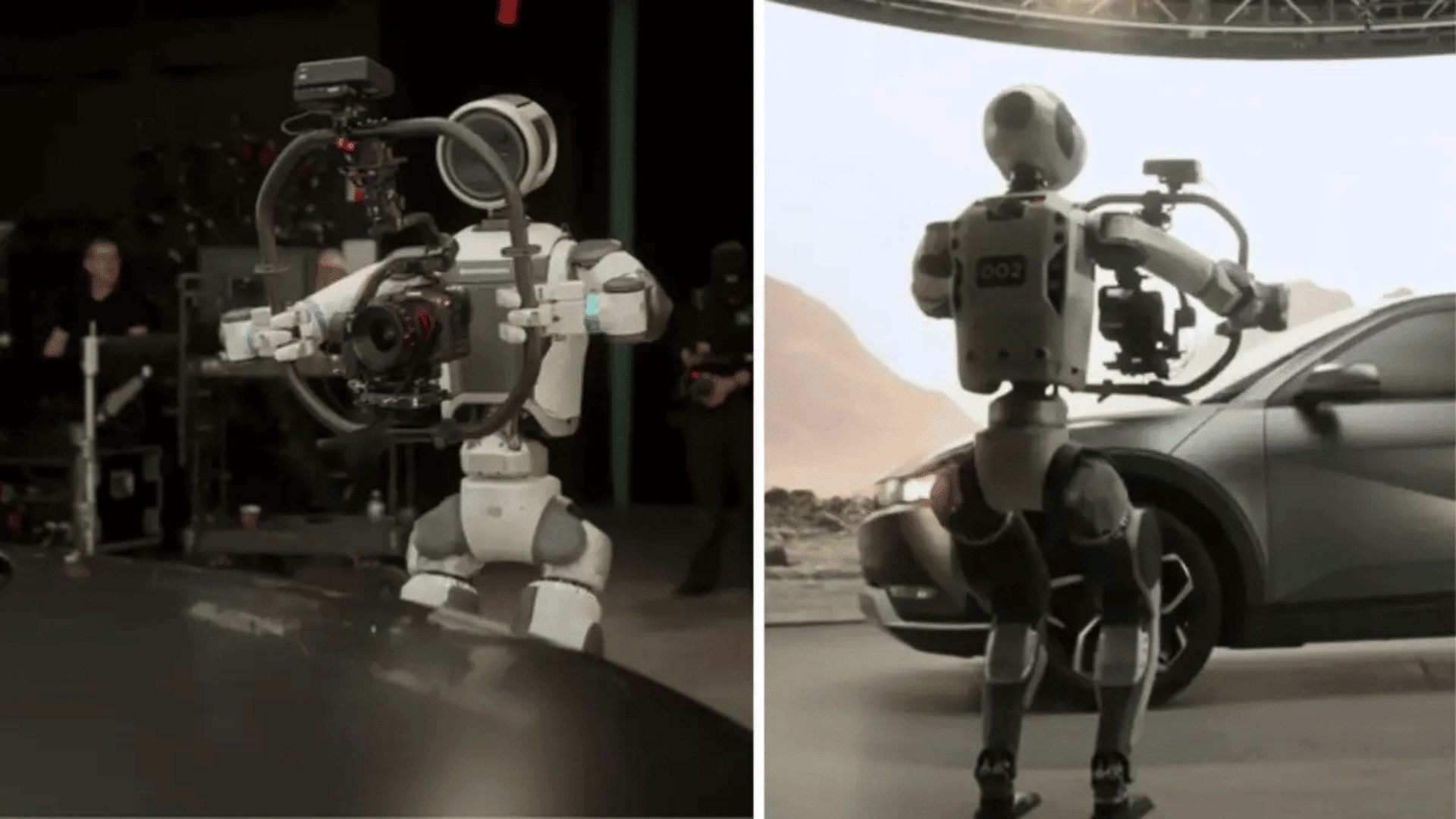On February 13, the Cincinnati Bengals played the Los Angeles Rams at the SoFi Stadium in L.A. for Super Bowl LVI. In addition to the Super Bowl, the stadium will host the 2023 College Football National Championship, the Opening and Closing Ceremonies of the 2028 Summer Olympic Games, and countless concerts, games, and events. The reason? The SoFi Stadium could be the most advanced, high-tech stadium in the world.
World’s First Indoor-Outdoor Stadium
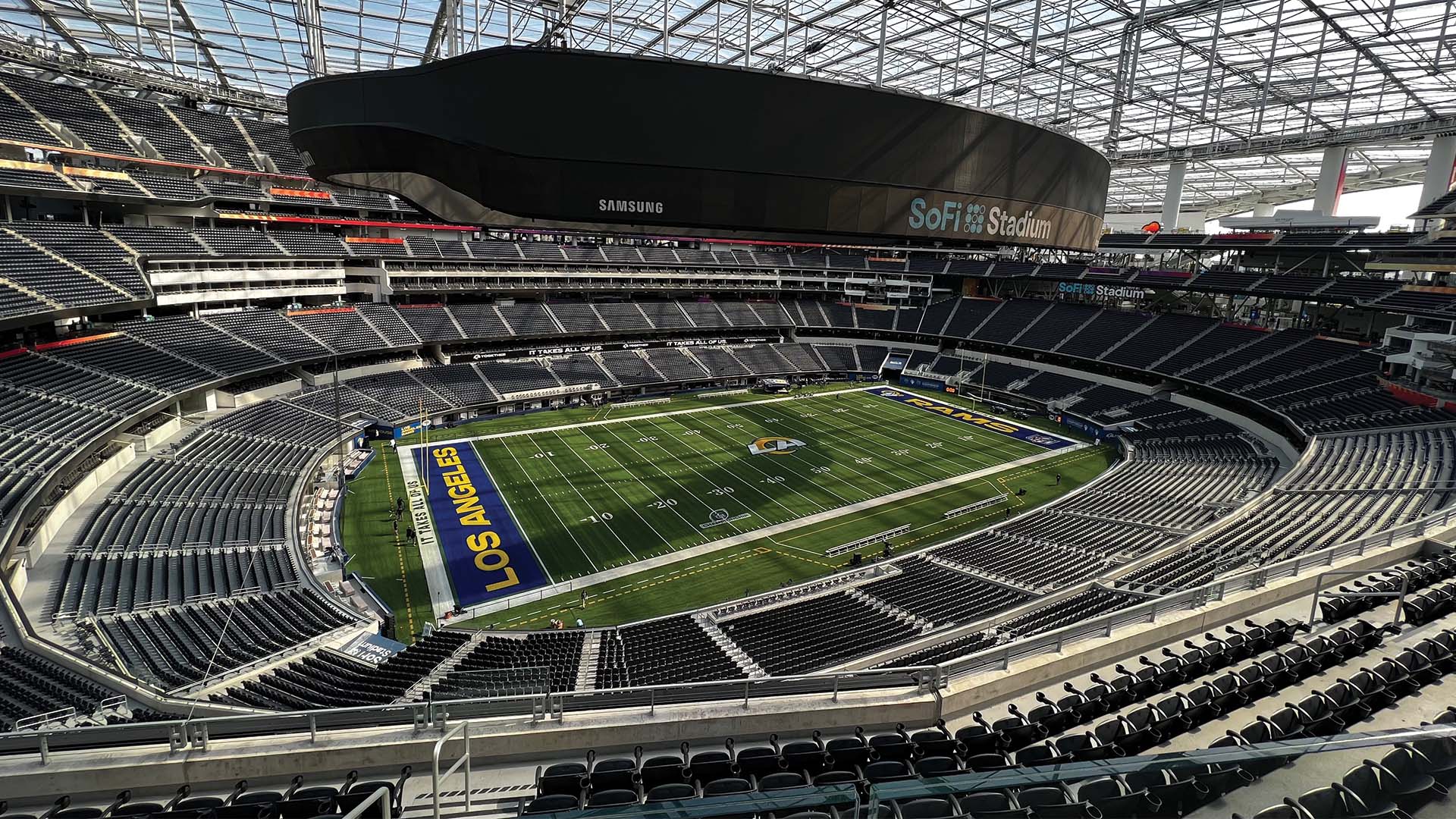
One of the biggest reasons that the SoFi Stadium could be considered the most high-tech stadium in the world is its claim to fame—the world’s first indoor-outdoor stadium. This is possible because of the stadium’s ethylene tetrafluoroethylene (ETFE) roof, a translucent plastic that features a 65 percent dotted frit pattern that shades the stadium’s guests from about half of the sun’s heat. The roof also features operable panels distributed around the perimeter that can open and close. The roof and its panels allow the stadium to have passive ventilation and daylighting strategies while capitalizing on the sun’s position and ocean winds, ultimately making it a comfortable environment for fans. Additionally, the retractable roof allows events to occur in rain or shine.
The indoor-outdoor stadium extends further than just the roof. The stadium does not have exterior walls; instead, the roof structure is anchored to the ground in four locations and the edges are open to the outdoors along the sides. The roof’s structure and the adjustable roof openings allow for the ocean breeze to rush into the stadium and light to strategically stream in.
Semi-Subterranean Seats
SoFi Stadium is located just three miles away from Los Angeles International Airport, so builders had to adhere to the strict height limitations set by the Federal Aviation Administration. The solution? Placing the stadium 100 feet below ground in a semi-subterranean building design.
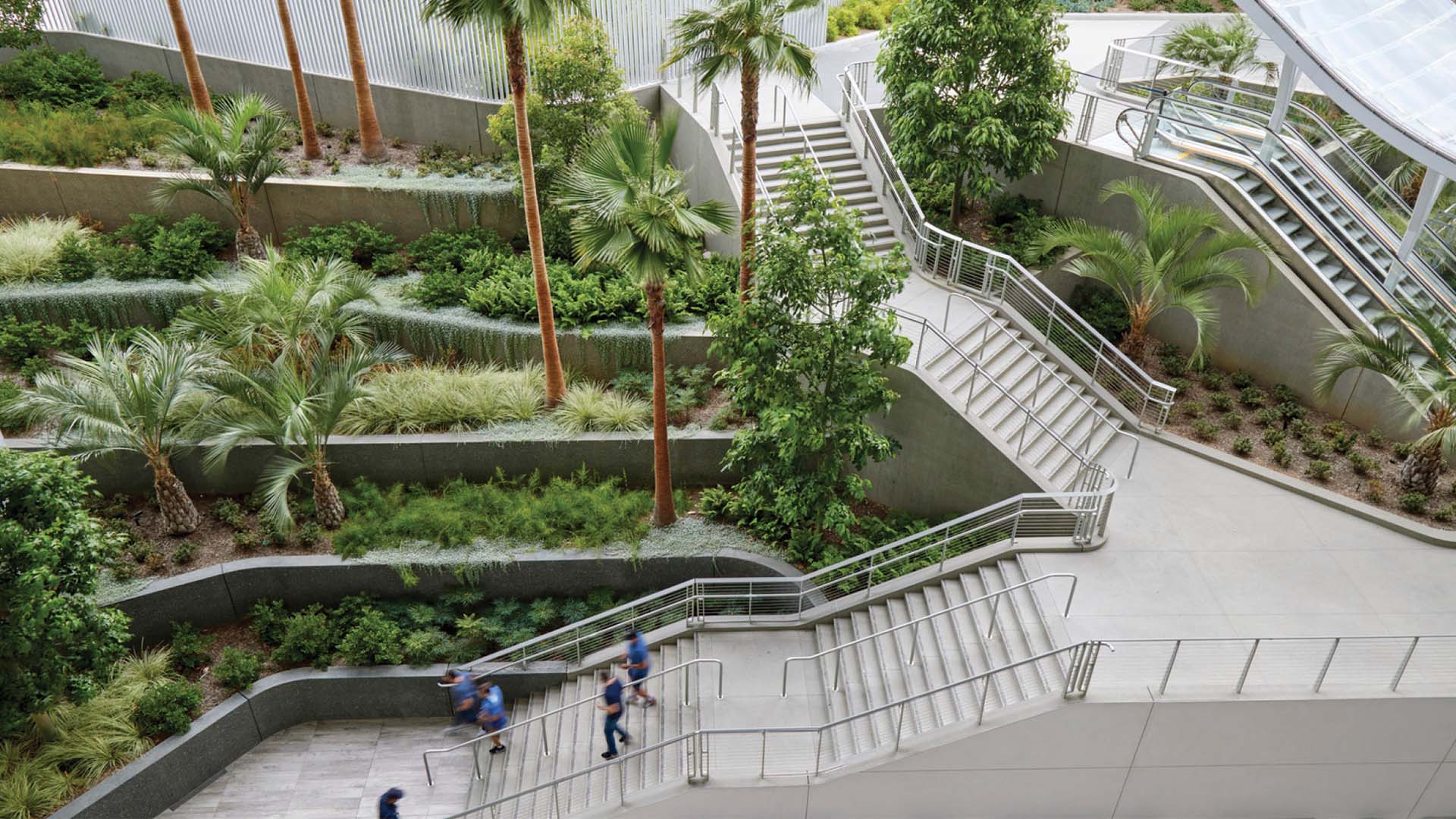
In order to ensure that visitors didn’t feel as if they were going underground, the stadium’s team studied cliffside architecture, naturally occurring formations, and design solutions. As a result, their final design views the entire stadium as an “embedded object” that creates harmony between natural and built environments. Inside the stadium, the terraced, landscaped canyons that adorn the stadium’s seating bowl as visitors walk down to their seats reflect this embedded vision.
The Infinity Screen by Samsung
Many consider the most high-tech aspect of SoFi Stadium to be the Infinity Screen by Samsung, the largest video board ever created in sports. This oval-shaped, dual-sided screen hangs from steel rafters and is 360-degrees, 70,000 square feet, and traces the circumference of the field level. The entire system weighs over 1,000 tons (2,000,000 pounds) and includes more than 25,000 miles of cabling—that’s enough cable to extend all around Earth!
The oval-shaped and dual-sided screen makes it readable from a wider range of sight-lines and seat locations. To make the viewing experience even better for fans, the screen is as close to the field as the NFL allows. In addition to this massive screen, the stadium features over 2,600 Samsung large format displays, including menu boards and 4K show displays that appear around the park.
Mixed-Use Development
If the innovative SoFi Stadium wasn’t enough, it is actually just a part of the bigger, 300-acre Hollywood Park. Hollywood Park is a mixed-use development complex that features the stadium, the 6,000-seat performance space called the YouTube Theater, the 2.5-acre American Airlines Plaza, and a landscape filled with hills, parks, and an artificial lake. The complex will phase in many additions in the next few years such as 1.5 million square feet of retail, restaurants, office spaces, townhomes, apartments, and a hotel.
The interconnected venues of SoFi Stadium, YouTube Theater, and American Airlines Plaza can also host simultaneous events. For example, a concert at YouTube Theater, a Rams or Chargers game at SoFi Stadium, and a watch party at American Airlines Plaza can concurrently occur, an impressive feat in architecture and design.
As for the surrounding landscape, Hollywood Park will be open to the public every day, not just when one of the venues is hosting an event. The Park’s goal is to truly integrate into the community and make it a place that locals and tourists alike can gather, walk, and enjoy.
Sustainability
There has been a global shift to building more sustainable stadiums, and the SoFi Stadium follows suit. One major concern of the stadium, and California as a whole, is water scarcity. In response, designers incorporated stormwater capture strategies in the stadium to keep naturally occurring water onsite.
For example, the lake in Hollywood Park gets filtered by wetland vegetation and soil so it can be used for irrigation. Additionally, the stadium’s 29-acre roof and cisterns collect and store rainwater. According to designers, approximately 75 percent of stormwater that reaches the site is retained there for irrigation. An estimated 26 million gallons of water per year—and 100 percent of all irrigation used on site—is reclaimed.



